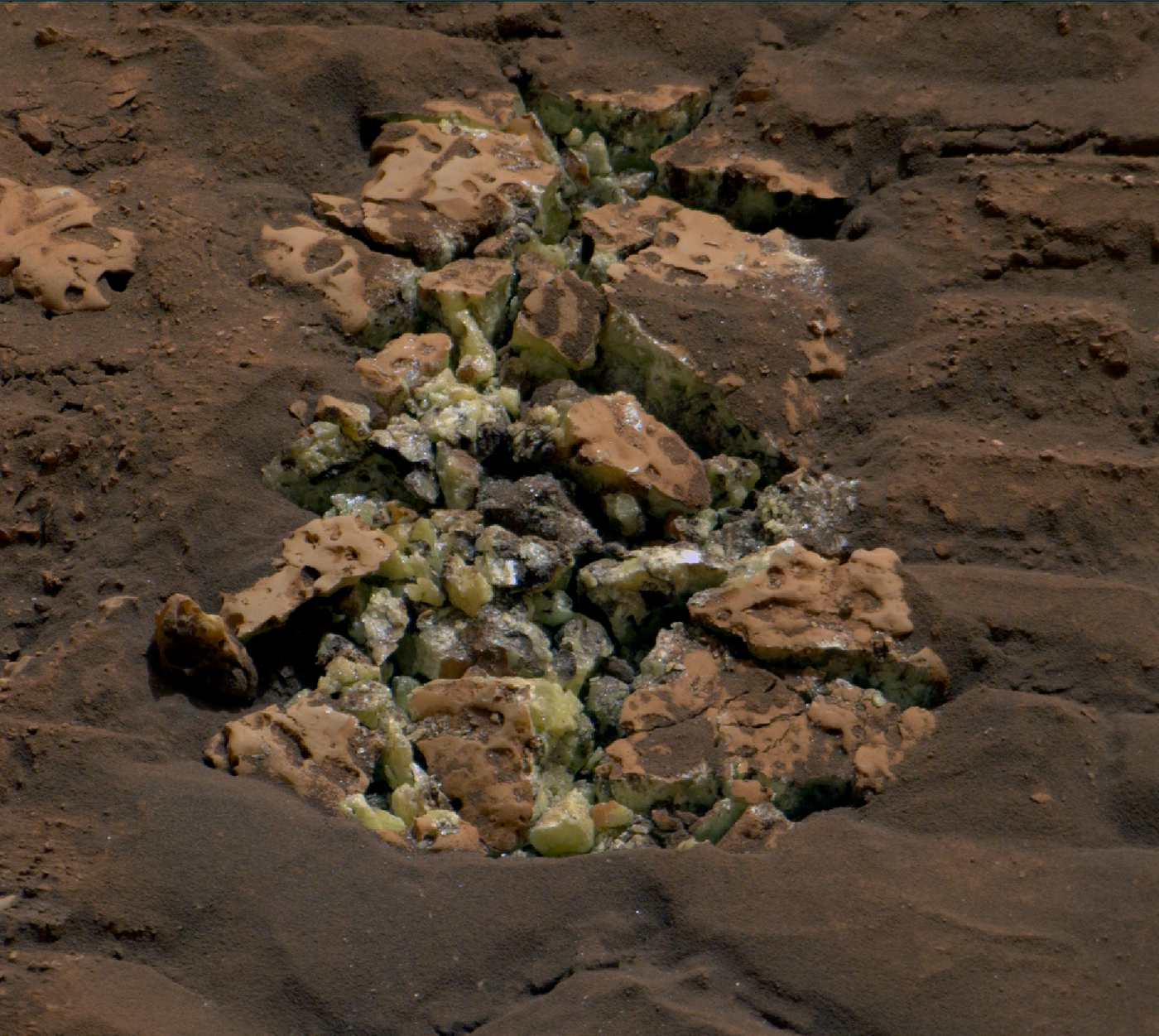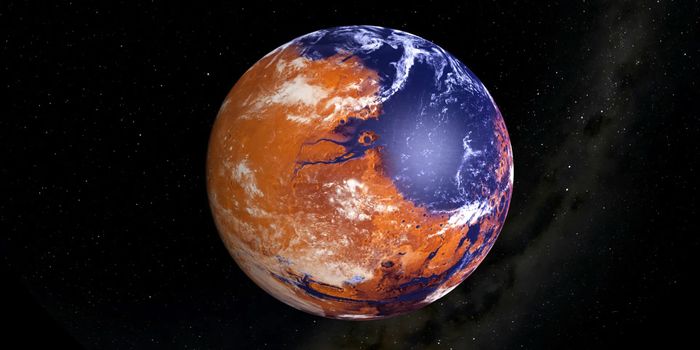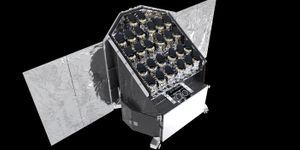Mars Surprise: Rover Discovers Pure Sulfur Rocks
Did life ever exist on Mars, and if so, how did it get there? This is the goal of NASA’s Curiosity rover, which has traversed Gale Crater on Mars since 2012. But a recent finding by the car-sized robotic explorer could help bring scientists one step closer to answering these questions as Curiosity sent back images of yellow crystals revealed to be deposits of elemental sulfur, along with an entire field of them. This finding was accidentally “un-earthed” as Curiosity drove over them during its excursions. While scientists didn’t anticipate finding elemental sulfur in this region, this finding could hold the potential to help piece together the geologic history of Gale Crater and whether life once existed there.
Recent image of elemental sulfur crystals obtained by NASA's Curiosity rover on Mars. (Credit: NASA/JPL-Caltech/Malin Space Science Systems)
“Finding a field of stones made of pure sulfur is like finding an oasis in the desert,” said Dr. Ashwin Vasavada, who is a project scientist on Curiosity at NASA’s Jet Propulsion Laboratory. “It shouldn’t be there, so now we have to explain it. Discovering strange and unexpected things is what makes planetary exploration so exciting.”
This exciting finding comes as Curiosity has been traversing down the Gediz Vallis channel, which scientists hypothesize was formed from flowing liquid water deep in Mars’ ancient past. This has been shown with countless orbital and rover images displaying landslides comprised of boulders and sediments that were deposited billions of years ago in floodwaters that could have provided the ingredients for life as we know it.
“This was not a quiet period on Mars,” said Dr. Becky Williams, who is a planetary geologist at the Planetary Science Institute and the deputy principal investigator of Curiosity’s Mast Camera, also called Mastcam. “There was an exciting amount of activity here. We’re looking at multiple flows down the channel, including energetic floods and boulder-rich flows.”
To investigate the elemental sulfur, the science team decided to drill into a nearby rock since the sulfur was determined to be too brittle for drilling. The samples were then analyzed using Curiosity’s many scientific instruments, whose results are still being evaluated by scientists back on Earth.
What new discoveries will Curiosity make in the coming years and decades? Only time will tell, and this is why we science!
As always, keep doing science & keep looking up!









